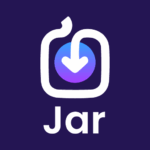Decoding Android's Main Dispatchers: A Comparative Look at Main vs. Main Immediate
3 min read · Written by Prasenjit Banik
In Android development, dispatchers play a crucial role in managing concurrency, particularly when working with coroutines. Among these, the main dispatcher is perhaps the most significant, as it handles code execution on the user interface (UI) or main thread of your application. However, there is more nuance than meets the
In Android development, dispatchers play a crucial role in managing concurrency, particularly when working with coroutines. Among these, the main dispatcher is perhaps the most significant, as it handles code execution on the user interface (UI) or main thread of your application. However, there is more nuance than meets the eye. In this article, we’ll dive into the differences between Dispatchers.Main and Dispatchers.Main.immediate, and understand why it matters.
What is Dispatchers.Main?
Dispatchers.Main executes code on the UI thread of your Android application. This is essential for any operation that interacts with the UI, ensuring that these interactions are smooth and without lag.
Example:
CoroutineScope(Dispatchers.Main).launch {
// Code here runs on the UI thread
}
What is Dispatchers.Main.immediate?
Similarly, Dispatchers.Main.immediate also runs code on the UI thread. The difference lies in how and when the code is executed.
Example:
CoroutineScope(Dispatchers.Main.immediate)).launch {
// Code here runs on the UI thread
}
Key Differences
To understand the added benefit of Dispatchers.Main.immediate, we need to look back at some legacy Android concurrency constructs.
Legacy Constructs:
Dispatchers.Mainbehaves likeHandler(Looper.getMainLooper()).post { ... }. If you’ve been developing for Android before coroutines, you’re probably familiar with postingRunnableto aHandler.Dispatchers.Main.immediatebehaves likeActivity.runOnUiThread { ... }. This method runs the code immediately if the current thread is already the UI thread.
Source Code Insights
Here’s a simplified look at what Activity.runOnUiThread does:
public final void runOnUiThread(Runnable action) {
if (Thread.currentThread() != mUiThread) {
mHandler.post(action);
} else {
action.run();
}
}
If the current thread is the UI thread, it executes the action immediately; otherwise, it posts the action to the UI handler.
How the Android UI Thread’s Event Queue Works
The Android UI thread’s event queue is a fundamental component that ensures smooth and efficient processing of tasks on the main thread. Understanding this mechanism is crucial for grasping how Dispatchers.Main and Dispatchers.Main.immediate work.
Event Queue Mechanism
At any given moment, the UI thread can execute only one task. To manage multiple tasks, Android uses an event queue where tasks are lined up and processed sequentially.
- Task Posting: Tasks, such as updating the UI or handling user interactions, are posted to the event queue using handlers or dispatchers.
- Event Queue Processing: The UI thread processes tasks from the event queue one by one. When the current task completes, the next task in the queue is processed.
- Looper and Handler: A
Looperruns the event loop for a thread, and aHandlerallows you to send and processMessageandRunnableobjects associated with a thread'sMessageQueue.
Example Scenario
When you call Dispatchers.Main, the task is posted to the event queue and processed in sequence. However, with Dispatchers.Main.immediate, if the current thread is already the UI thread, the task executes immediately without being queued.
Practical Implications
Let’s explore this with an example.
Using Dispatchers.Main
button.setOnClickListener {
CoroutineScope(Dispatchers.Main).launch {
println("First task")
}
CoroutineScope(Dispatchers.Main).launch {
println("Second task")
}
CoroutineScope(Dispatchers.Main).launch {
println("Third task")
}
}
Event Queue:
- Button click event starts.
- First coroutine launched, added to event queue.
- Second coroutine launched, added to event queue.
- Third coroutine launched, added to event queue.
- Button click event completes, UI thread processes the event queue.
Output:
First task
Second task
Third task
Using Dispatchers.Main.immediate
button.setOnClickListener {
CoroutineScope(Dispatchers.Main).launch {
println("First task")
}
CoroutineScope(Dispatchers.Main).launch {
println("Second task")
}
CoroutineScope(Dispatchers.Main.immediate).launch {
println("Third task")
}
}
Event Queue:
- Button click event starts.
- First coroutine launched, added to event queue.
- Second coroutine launched, added to event queue.
- Third coroutine launched with
Dispatchers.Main.immediate, executed immediately if on UI thread. - Button click event completes, UI thread processes the remaining event queue.
Output:
Third task
First task
Second task
Conclusion
While Dispatchers.Main and Dispatchers.Main.immediate can often be used interchangeably, understanding their differences is crucial for optimizing your code’s performance. In practice, it's recommended to use Dispatchers.Main.immediate for most cases where you want immediate execution on the UI thread. Reserve Dispatchers.Main for situations where you explicitly need to post to the end of the UI thread’s event queue.
By adopting Dispatchers.Main.immediate as a convention, you align with the best practices employed by Android libraries, ensuring more performant and responsive applications.
In summary, while the difference might seem subtle, leveraging Dispatchers.Main.immediate can lead to more efficient UI operations, making your Android application smoother and more responsive.
https://medium.com/@prasen267/decoding-androids-main-dispatchers-a-comparative-look-at-main-vs-main-immediate-1793aec8378f
